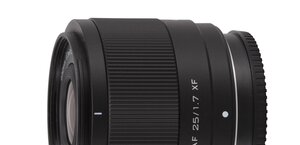Canon EF 400 mm f/4 DO IS II USM
11. Summary
Please Support UsIf you enjoy our reviews and articles, and you want us to continue our work please, support our website by donating through PayPal. The funds are going to be used for paying our editorial team, renting servers, and equipping our testing studio; only that way we will be able to continue providing you interesting content for free. |
- - - - - - - - - - - - - - - - - - - - - - - - - - - - - - - - - - - - - - - - - - - - - - - -
Pros:
- Very high build quality,
- Small dimensions and weight for the parameters,
- Excellent image quality in the frame centre,
- Very good image quality on the edge of the APS-C sensor,
- Good image quality on the edge of full frame,
- Lack of spherical aberration problems,
- Negligible longitudinal chromatic aberration,
- Very low lateral chromatic aberration,
- Imperceptible distortion,
- Very low coma,
- Lack of astigmatism problems,
- Low vignetting,
- Silent, accurate and efficient autofocus,
- Efficient image stabilization,
- Good cooperation with the TC1.4x III teleconverter.
Cons:
- A bit too big minimum focusing distance,
- Weak performance against bright light,
- Lack of possibility to choose the range of autofocus.
If there’s one thing we could carp about, it concerns not the tested lens but the approach of brand-name companies. Let’s say it clear - they like too much to rest on their laurels. Sigma and Tamron are more inclined in some aspects to make the life of the customers more pleasant; such devices like the USB Dock and TAP Utility are two fine examples of that policy. They enable you to e.g. limit the autofocus range and make it perform faster, reducing the chances that the mechanism won’t lock on the subject, wavering back and forth and such cases are not so rare if you decide to attach a teleconverter to your lens. I do hope such useful devices and solutions soon will be offered by Canon and Nikon too.






